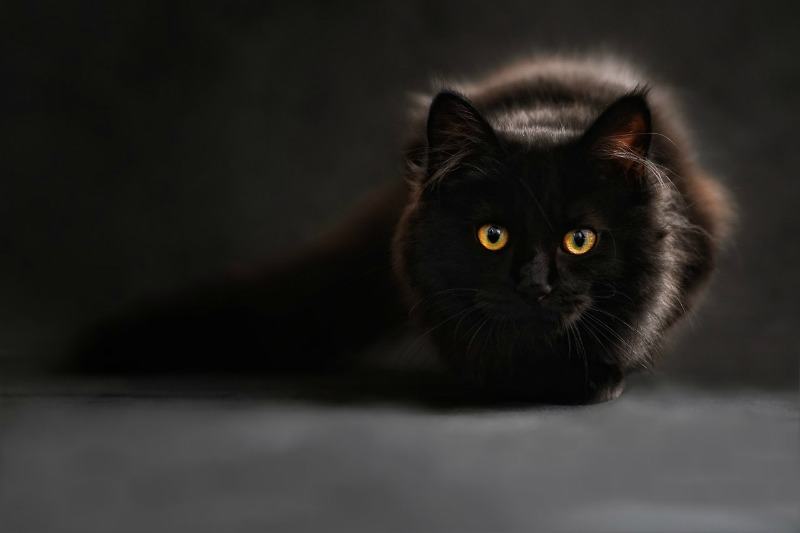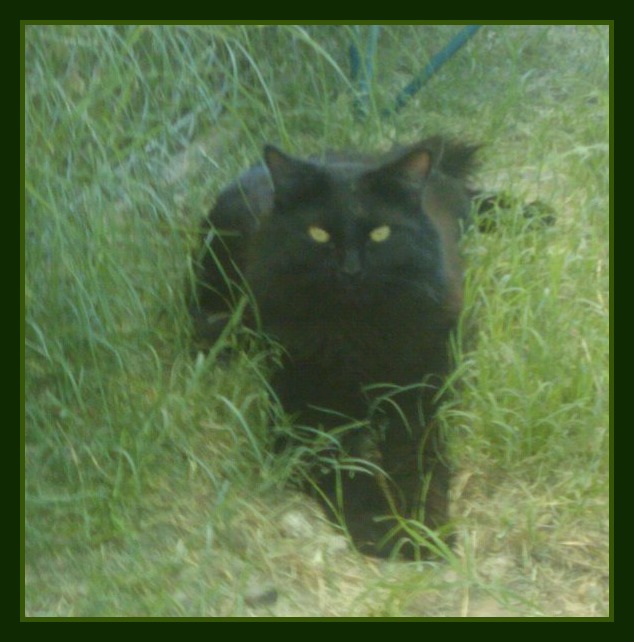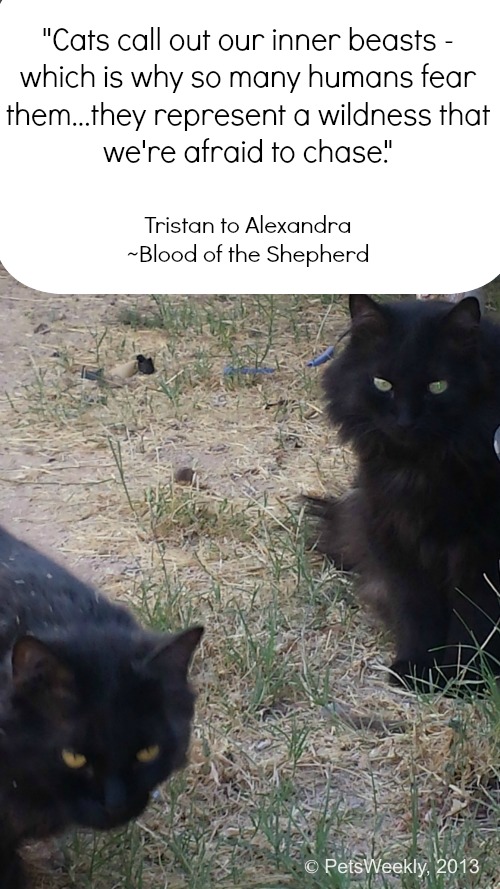5 Ways to Keep Your Cat from Attacking You
Share
 I’m sure you’ve all heard about the cat attack 911 call that came in from a family under attack from their pet cat. If you haven’t heard it yet, it’s worth a listen, but here’s the short version: Apparently, a family let their cat get a little too close to their toddler. The toddler pulled the cat’s tail. The cat scratched the toddler. Dad became upset and “spanked” the cat or “kicked” the cat (depending on which version of the story you’re reading). The cat, having had enough of the ridiculous behavior, threw a bit of a tantrum – which, in cat speak, means “communicating displeasure to your humans” but in human speak means, “my cat bullies me.”
I’m sure you’ve all heard about the cat attack 911 call that came in from a family under attack from their pet cat. If you haven’t heard it yet, it’s worth a listen, but here’s the short version: Apparently, a family let their cat get a little too close to their toddler. The toddler pulled the cat’s tail. The cat scratched the toddler. Dad became upset and “spanked” the cat or “kicked” the cat (depending on which version of the story you’re reading). The cat, having had enough of the ridiculous behavior, threw a bit of a tantrum – which, in cat speak, means “communicating displeasure to your humans” but in human speak means, “my cat bullies me.”
As always, I felt worse for the cat than I did for the family when I first read this, just as I feel worse for a child when he acts out than I do for the parents. Cats do what they do because it’s instinct. Threaten them, and they will react with a fight or flight reflex. The cat has since been moved to rescue, which I have mixed feelings about – mostly because I am sure the family will just get another cat and make the same mistakes. So, let’s talk about what went wrong…
One thing that is important to understand about our feline friends is that they are “self-domesticated.” Quite simply, it means they came to live with us because they chose to, not because we trained them to. They consent to being our pets only because it’s to their advantage to do so.
There is a delicate balance between a cat and his/her owner. Upset or betray that balance, bad things can (and will) happen.
For example, we have a cat named Hephaestion. He is named after the faithful sidekick and loyal companion to the Greek conqueror, Alexander the Great. This is Hephaestion:

My husband doesn’t call our cat Hephaestion. Instead, he calls him Rasputin, (alluding to Russia’s last czar and one of the more scandalous characters in history, otherwise known as “The Mad Monk”).
Why did he take it upon himself to rename our cat? Because Hephaestion is crazy and unpredictable and, as a 20-lb cat, downright dangerous if you don’t watch yourself.
Hapheastion is big, black, has hair thicker than mine, and is absolutely gorgeous. But (also like me) he’s highly volatile. Try to pet him on the wrong day (or during the wrong hour) and he will bite you. Feed him an hour later than normal, and he will make his displeasure known through the harassment of his fellow enclosure-mates. Try to brush out his heavy mats or place him in a kennel to take him to a vet, and God help you…
If you also have a cat like Hephaestion, you have my condolences. Don’t get me wrong – I love this cat. More importantly, I understand these types of cats.
Let me assure you that there are things you can do to make your life (and their life) easier, ensuring you will never be stuck in a bathroom with your family calling 911 for a rescue.
[heading style=”2″ color=”#ff9933″ style_color=”#ff9933″]Get Your Cat In for A Vet Check[/heading]
Rule out medical conditions that might cause aggression. Cats rarely show that they are in pain and often it’s too late to help them by the time they do. A vet can rule out any conditions that might be agitating your cat.
[heading style=”2″ color=”#ff9933″ style_color=”#ff9933″]Never leave a child alone with a cat (or ANY animal)[/heading]
Children should be taught early on in life how to approach, touch, and handle an animal. They should also be taught how NOT to do those things. They are never too young to teach “gentle”. Toddlers and cats (or any other animal) should never be left alone – too many unpredictable things can happen. Far too often, something that the child did (perhaps unknowingly, perhaps not) is the cause of many problems.

[heading style=”2″ color=”#ff9933″ style_color=”#ff9933″]Never Attempt To “Punish” a Cat.[/heading]
Cats do not understand punishment and they will hold grudges. Never “spank” or “kick” or “strike” a cat. You’ll pay for it in the long run…
[heading style=”2″ color=”#ff9933″ style_color=”#ff9933″]Establish a Routine and Avoid Change.[/heading]
Moving furniture, placing things on counter, and general clutter makes for unhappy cats. Don’t change litter, litterbox sizes, or food if you can avoid it. Cats love for things to stay the same. If you want to change anything, add playtime or snack-time or an extra toy to help stimulate their prey drive. Your cat needs to have regular mental and physical interaction. Remember that you are dealing with a predator. The second you forget that fact, you become someone for them to toy with.
[heading style=”2″ color=”#ff9933″ style_color=”#ff9933″]Never Run Away. Ever.[/heading]
Running activates a cats prey drive. Remember that you are dealing with a predator. Running only guarantees a chase. Instead, slowly retreat from the cat’s space and leave her to quietly calm herself down.
Cats are not nearly as complex as we think. Most are happy to get through the day in a prey, play, eat, sleep mode. Allow them to keep this routine, and you’ll have a happy well-adjusted cat. If you change it up, change it up in a gentle way that helps them expand their basic needs. A cat fountain, a new toy, walking on a harness, there are many ways to keep your cat entertained without making them feel threatened.












